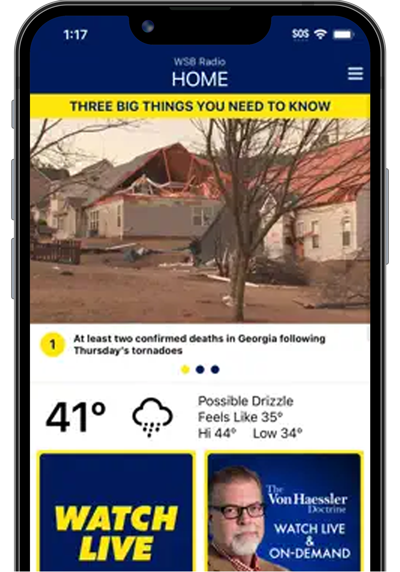The time is long past due to dive into the mailbag of great questions and insights from loyal readers and we are going to dive into a wide array of them…next week.
This week, we have two important questions on headlights and one requires a deeper dive.
Doug, do LED headlights on vehicles have dimmer capability? They are blinding to drivers headed toward them. I blink my lights, but they don’t dim. They are very dangerous. Thanks.
-Jenny V.
I was surprised with the moderately deep dive this question sent me. A short Google search on “dimming LED headlights in vehicles” led me to a really informative CNBC feature called, “How Headlights Became So High Tech?”.
Basically, late model vehicles with LED lights often have some sorts of dimming abilities. But according the the transportation experts in the video, those features are often adaptive and built into the headlights themselves.
Rightfully, drivers do not have the ability to gradually dim headlights and taillights, to my knowledge, as people do with light switches in a home.
The interviewed transportation experts in that extensive piece gave the history of headlights on automobiles and it was fascinating. Basically, headlights were not really used on any cars at all until the turn of the 20th century. Drivers literally used to light kerosene lamps.
That eventually evolved into the halogen headlights with filaments that were common for decades. High beams, which used to be the common setting for cars and drivers, first debuted in 1924.
The dawn of the new millennium brought non-filament xenon headlights, which illuminated a broader swath for drivers. Then came the aforementioned LED lights, which have more features and designs. Audi, according to the CNBC feature, has headlights that can actually display messages of warning to oncoming drivers.
One commonality from the Jazz Age to the Information Age in headlight history has been that they are too bright to oncoming vehicles. 21st century preferences have made higher-profile SUVs en vogue, so the higher headlights are even more disturbing to opposite vehicles.
Traffic and auto wonks in the CNBC piece noted another trait in headlight history. The U.S. government has far less regulations about headlights, in comparison to other countries.
So, Jenny, that may have been way too much information. But this sheds a little more light on the bright beams problems. Pun intended.
I was curious if it is acceptable or required to drive with your emergency lights on during the daylight hours when it is pouring rain, snowing, foggy or smoky. I noticed that autos with their emergency flashing lights on were significantly more visible both from a forward or rear view when compared to ones with just headlights on during a recent drive on I-16 in heavy rain storm. Thanks.
-Tom W.
I last wrote about this polarizing maneuver during a rainy period in the spring of 2021. While, to me, driving with hazards on in the rain is plainly and offensively idiotic, I have gotten multiple emails like Tom’s.
And he makes a valid point.
Flashing yellow lights do show better than steady tail lights during poor visibility events. There is no denying that. So, intuitively, turning them on to better show one’s vehicle during heavy rain, fog, snow, or smoke makes some sense.
However, they are called hazard lights for a reason. They signal to other drivers and to first responders that a vehicle or a person in it is having a problem. If a police officer or HERO operator sees someone with their distress signals on, they are supposed to respond in kind.
When someone instead is using the hazard lights to point out how obviously hazardous the gullywasher rain storm is around them, it does very little good. And the nearby police officer has to waste time paying attention to the distress signal from Captain Obvious.
Georgia law does not ban this silly act, but officers can pull drivers over for illegal lane changes for not using their turn signals…because the flashers are illuminated.
If driving is so treacherous that one feels compelled to turn the caution lights on, they simply need to pull into a parking lot or off on an exit and wait out the conditions. Slowing down 20 mph below the speed limit and driving with hazards on in the pouring rain is far more dangerous than simply driving with regular head and tail lights.
Doug Turnbull, the PM drive Skycopter anchor for Triple Team Traffic on 95.5 WSB, is the Gridlock Guy. He also hosts a traffic podcast with Smilin’ Mark McKay on wsbradio.com. Contact him at Doug.Turnbull@cmg.com.
©2022 Cox Media Group

:quality(70)/cloudfront-us-east-1.images.arcpublishing.com/cmg/A6PEAWLQUFCM3I6OAZH63IFF5Y.jpg)
:quality(70)/cloudfront-us-east-1.images.arcpublishing.com/cmg/X6EBDNJ5NNDXRDWDDU75DFATHY.jpg)
:quality(70)/cloudfront-us-east-1.images.arcpublishing.com/cmg/GKUTW3WJ7BAJXOQ3SNN2N7OIXY.jpg)
:quality(70)/cloudfront-us-east-1.images.arcpublishing.com/cmg/YL5ZWVWJMNFNNDCO6CYN46LXLA.jpg)



